TWA Hotel recognized by American Institute of Architects for its 2021 Architecture Awards

New York, NY The American Institute of Architects (AIA) is recognizing ten projects with its 2021 Architecture Awards. The awards program celebrates the best contemporary architecture and highlights the many ways buildings and spaces can improve lives. The nine-member jury selects submissions that demonstrate design achievement, including a sense of place, purpose, history, and environmental sustainability. Among the year’s recipients is the The TWA Hotel.
The TWA Hotel imbues Eero Saarinen’s TWA Flight Center at New York’s John F. Kennedy International Airport, one of the grandest examples of mid-century modern architecture, with new life. While its expressive form has long evoked the act of flying, its renovation and addition of more than 250,000 s/f allow it to serve as its own destination in the heart of one of the world’s busiest airports.
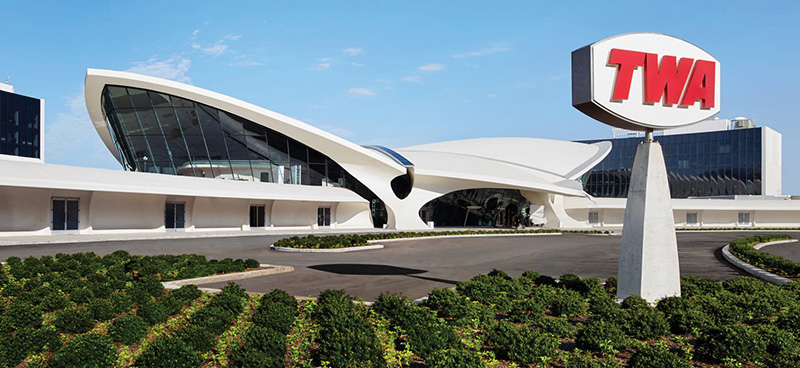 The project team included: Architect: Beyer Blinder Belle; owner: MCR/Morse Development; consulting architect and design architect for the hotel buildings: Lubrano Ciavarra Architects (LCA); interior design for hotel rooms, select public areas: Stonehill Taylor; interior design for conference and event spaces: INC Architecture & Design; landscape architect: MNLA; lighting design, flight center: One Lux Studio; lighting design, hotel: Cooley Monato Studios; food service design: Next Step Studios; structural engineer: Arup; MEP engineer: Jaros, Baum & Bolles; geotechnical engineer: Langan; Phase I restoration client: Port Authority of New York and New Jersey; Phase II hotel redevelopment client: MCR/Morse Development; and Airport Operator: Port Authority of New York and New Jersey.
The project team included: Architect: Beyer Blinder Belle; owner: MCR/Morse Development; consulting architect and design architect for the hotel buildings: Lubrano Ciavarra Architects (LCA); interior design for hotel rooms, select public areas: Stonehill Taylor; interior design for conference and event spaces: INC Architecture & Design; landscape architect: MNLA; lighting design, flight center: One Lux Studio; lighting design, hotel: Cooley Monato Studios; food service design: Next Step Studios; structural engineer: Arup; MEP engineer: Jaros, Baum & Bolles; geotechnical engineer: Langan; Phase I restoration client: Port Authority of New York and New Jersey; Phase II hotel redevelopment client: MCR/Morse Development; and Airport Operator: Port Authority of New York and New Jersey.
When it was designed in the mid-1950s, Saarinen’s center supported a much different type of air travel than today’s. Meant to accommodate 80-passenger prop planes and Boeing’s early jet airliners, the terminal could not handle the wide-body planes that emerged shortly after its opening. Its inability to accommodate greater passenger loads and baggage handling requirements quickly rendered the center obsolete, and TWA’s multiple bankruptcies followed.
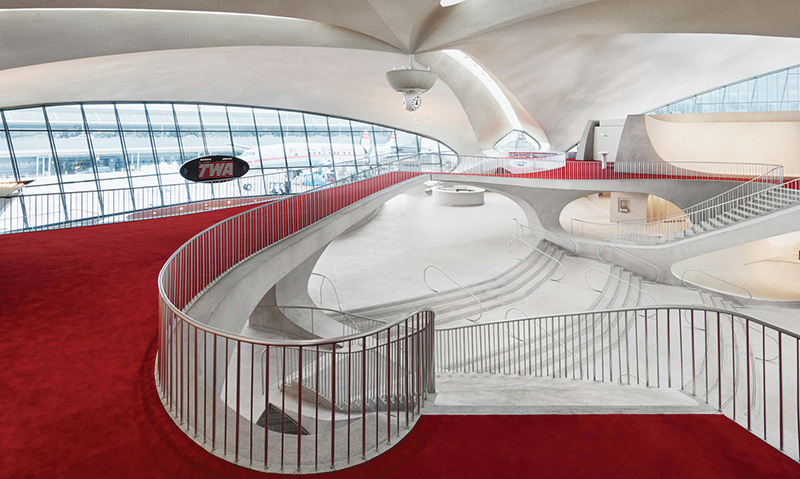 Regardless of its deficiencies, the New York City Landmarks Preservation Commission designated the center a landmark in 1995, recognizing its architectural pedigree. However, it was still vulnerable to demolition until the Port Authority of New York and New Jersey constructed a new JetBlue terminal behind the center, effectively sheltering it in place. The design team initially worked with the Port Authority as a preservation consultant to stabilize the center following its vacancy in 2002 after TWA’s final bankruptcy.
Regardless of its deficiencies, the New York City Landmarks Preservation Commission designated the center a landmark in 1995, recognizing its architectural pedigree. However, it was still vulnerable to demolition until the Port Authority of New York and New Jersey constructed a new JetBlue terminal behind the center, effectively sheltering it in place. The design team initially worked with the Port Authority as a preservation consultant to stabilize the center following its vacancy in 2002 after TWA’s final bankruptcy.
The transformation of the center into a hotel was completed in two phases, with the first restoring the center’s core interior spaces. The second, undertaken by a hotel developer, completed the project. The historic center now boasts six restaurants, a fitness center, several shops, and a 250-person ballroom where passengers once retrieved their baggage. As the airport’s only on-site hotel, it greets more than 160,000 passengers who travel through the hub daily.
Two new hotel wings are organized around the passenger tubes and set between the center and adjacent JetBlue roadway. The wings are wrapped in a triple-glazed curtain wall consisting of seven lites of glass that provide acoustic isolation. The northern wing is capped with a co-generation plant, and the southern includes a 10,000 s/f pool deck and bar.
The team went to great lengths to restore the flight center, including its exterior shell, finishes, and systems. The work was informed by drawings and photographs obtained from Yale University’s Saarinen Archives, which the team used to restore the building to the secretary of the interior’s standards for restoration.
The center’s curtain wall, comprising 238 trapezoidal panels, had regularly failed. The team restored it with neoprene zipper gaskets and tempered glass that match the original’s green tint. Inside, more than 20 million custom-made penny tiles were employed to make exacting repairs to surfaces throughout the center.
Each new intervention that the team introduced was carefully balanced to reference Saarinen’s aesthetic. Its palette of wood, metal, glass, and tile continues the center’s legacy of modern elegance. As a nod to the center’s previous life, it features didactic displays on Saarinen, TWA, and the airport’s history. A restored 1958 Lockheed Constellation L1648A nicknamed “Connie” sits just outside, now serving as a cocktail lounge.
Troutbrook expands with boutique condo project and Marriott Fairfield Inn & Suites renovation




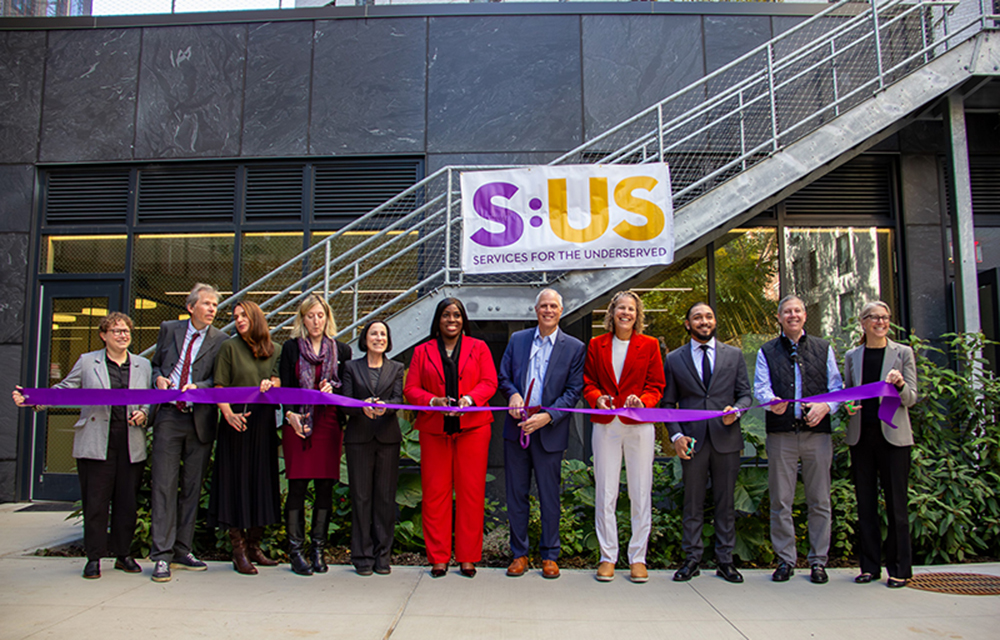
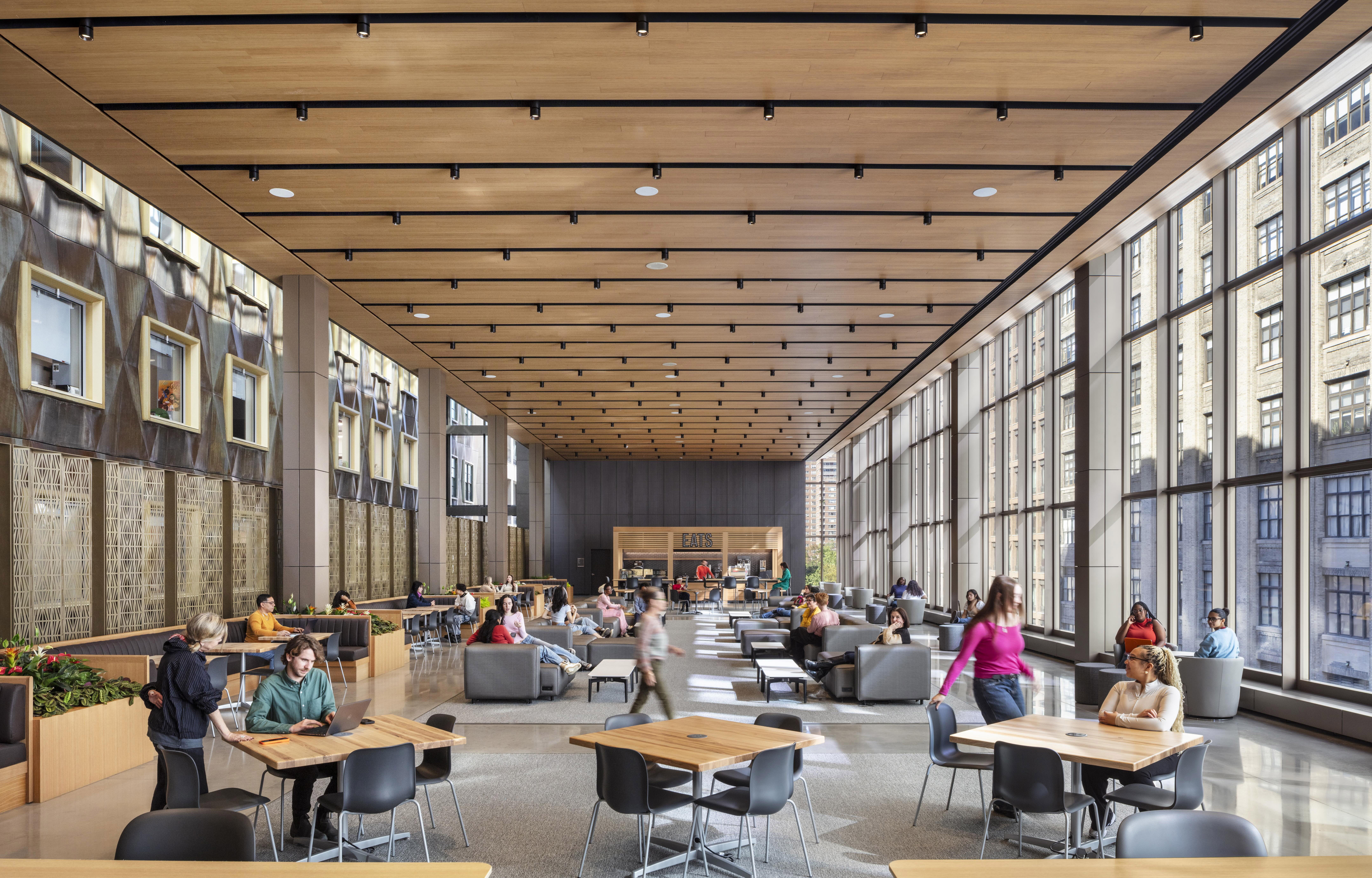
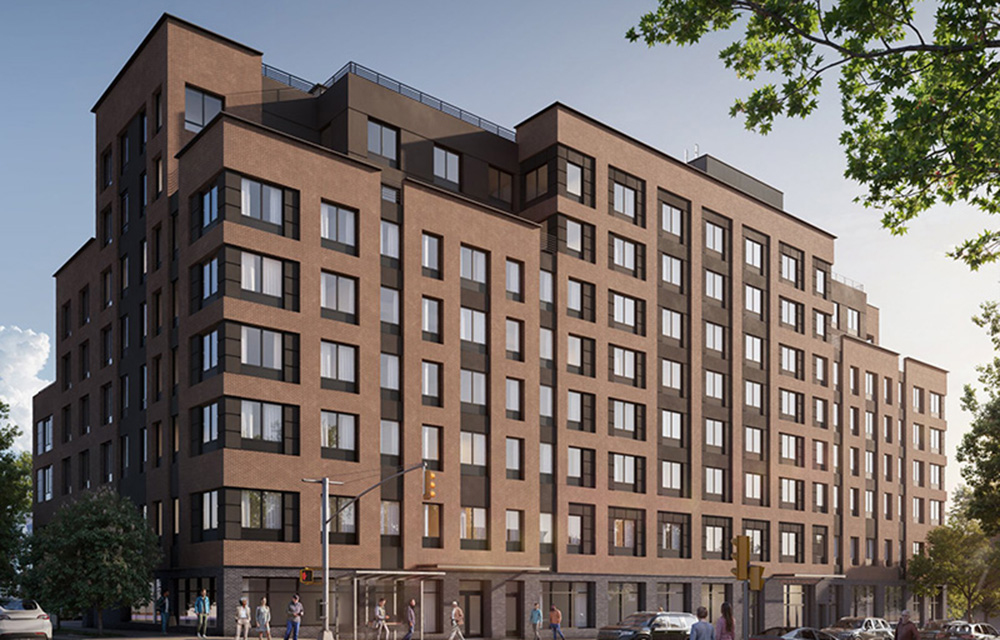

.gif)
.jpg)

.gif)